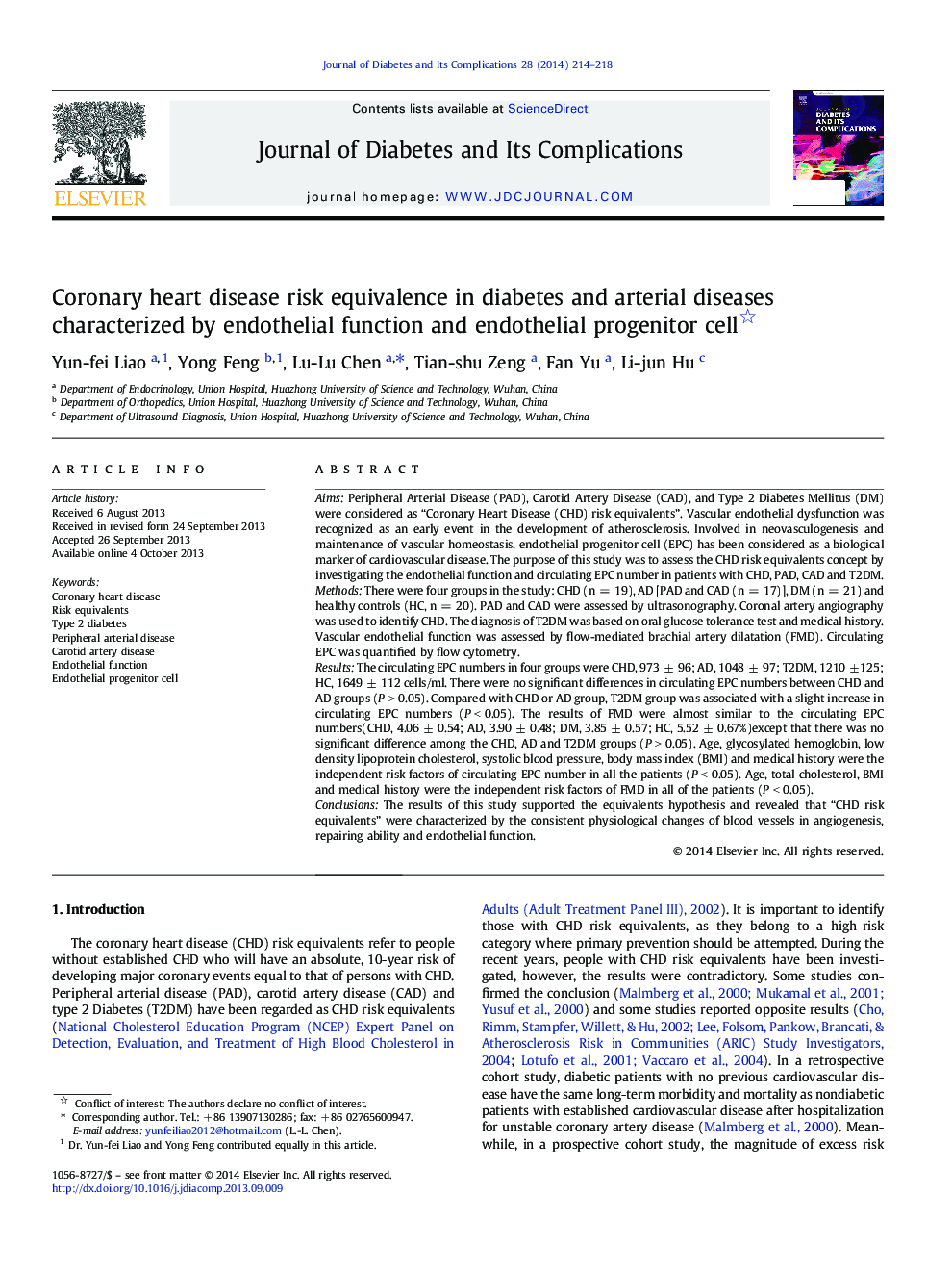| Article ID | Journal | Published Year | Pages | File Type |
|---|---|---|---|---|
| 2804302 | Journal of Diabetes and its Complications | 2014 | 5 Pages |
AimsPeripheral Arterial Disease (PAD), Carotid Artery Disease (CAD), and Type 2 Diabetes Mellitus (DM) were considered as “Coronary Heart Disease (CHD) risk equivalents”. Vascular endothelial dysfunction was recognized as an early event in the development of atherosclerosis. Involved in neovasculogenesis and maintenance of vascular homeostasis, endothelial progenitor cell (EPC) has been considered as a biological marker of cardiovascular disease. The purpose of this study was to assess the CHD risk equivalents concept by investigating the endothelial function and circulating EPC number in patients with CHD, PAD, CAD and T2DM.MethodsThere were four groups in the study: CHD (n = 19), AD [PAD and CAD (n = 17)], DM (n = 21) and healthy controls (HC, n = 20). PAD and CAD were assessed by ultrasonography. Coronal artery angiography was used to identify CHD. The diagnosis of T2DM was based on oral glucose tolerance test and medical history. Vascular endothelial function was assessed by flow-mediated brachial artery dilatation (FMD). Circulating EPC was quantified by flow cytometry.ResultsThe circulating EPC numbers in four groups were CHD, 973 ± 96; AD, 1048 ± 97; T2DM, 1210 ± 125; HC, 1649 ± 112 cells/ml. There were no significant differences in circulating EPC numbers between CHD and AD groups (P > 0.05). Compared with CHD or AD group, T2DM group was associated with a slight increase in circulating EPC numbers (P < 0.05). The results of FMD were almost similar to the circulating EPC numbers(CHD, 4.06 ± 0.54; AD, 3.90 ± 0.48; DM, 3.85 ± 0.57; HC, 5.52 ± 0.67%)except that there was no significant difference among the CHD, AD and T2DM groups (P > 0.05). Age, glycosylated hemoglobin, low density lipoprotein cholesterol, systolic blood pressure, body mass index (BMI) and medical history were the independent risk factors of circulating EPC number in all the patients (P < 0.05). Age, total cholesterol, BMI and medical history were the independent risk factors of FMD in all of the patients (P < 0.05).ConclusionsThe results of this study supported the equivalents hypothesis and revealed that “CHD risk equivalents” were characterized by the consistent physiological changes of blood vessels in angiogenesis, repairing ability and endothelial function.
